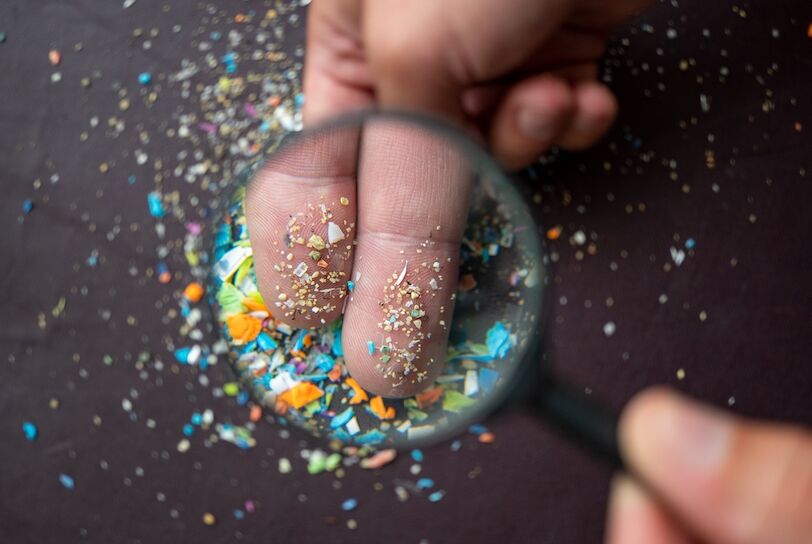
Microplastic particles on fingers under a magnifying glass. Photo: Shutterstock
Since the 2010s, conspiracy theorists have pointed to lab animal studies as “proof” that hormone-disrupting chemicals in water are “feminizing” humans and causing more people to identify as LGBTQ+. The claim hasn’t been substantiated by medical research, but a recent medical study has found microplastics — that is, extremely small pieces of plastic — inside of human testicles, possibly disrupting our hormones, our reproductive systems, and much more.
A research team recently examined the amounts of microplastics inside the testicles of dogs and humans. They did this using a process called pyrolysis-gas chromatography/mass spectrometry. The process heats organs to the point of decomposition, which then allows highly sensitive lab equipment to detect the chemical elements within them, Popular Science reported.
Related:
Researchers found that human testicles had, on average, levels of microplastics three times higher than those found in dogs. Even more stunning, researchers found 12 separate varieties of microplastics in the testicles — the most common was polyethylene, a plastic commonly found in beverage bottles and shopping bags. Their findings were published in the journal Toxicological Sciences.
Stay connected to your community
Connect with the issues and events that impact your community at home and beyond by subscribing to our newsletter.
The study may confirm the theory that microplastics have caused declining sperm counts worldwide. Microplastics may also have other toxic effects in humans, including triggering allergic reactions, causing cellular death, mutating DNA, disrupting hormones, and harming organ function, even possibly leading to heart attacks, strokes, inflammation, and other issues.
Microplastics may harm LGBTQ+ people even more, simply because queer people are less likely to have access to medical care due to increased levels of poverty or avoidance over fear of healthcare discrimination.
Sadly, microplastics have been found in ecosystems globally, even deep within oceans and high on mountaintops. The small particles can enter the human body through any food and drink products held in plastic containers, as well as through drinking tap water, eating seafood, wearing synthetic textiles, inhaling city dust, or using everyday plastic products that absorb into the skin.
While scientists are still researching ways for the human body to excrete microplastics naturally, avoiding plastic food containers and eating a diet of freshly grown and washed fruits and vegetables can all help reduce microplastic exposure.
Don’t forget to share:

